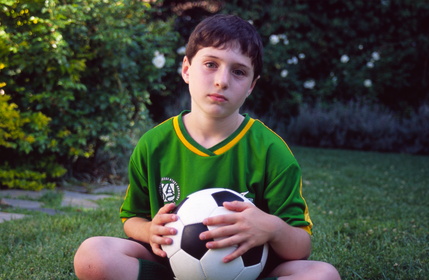
Overview
Once kids understand the basic ins and outs of soccer, the task ahead revolves around practice--the only thing that will lead to soccer skills becoming instinctive. Soccer practice must be consistent, with a focus for kids on fundamentals. A few simple steps can make practicing soccer both developmentally rewarding and fun for kids.
Step 1
Focus on fundamentals. Basic skills like dribbling, passing, shooting, ball control, receiving, goaltending, concept of field, turning and one-touch control are good examples. Until kids practice--and thereby develop--these foundational skills, other drills or foci will almost certainly fail to yield much in the way of results.
Step 2
Zero in on weak points. If, for example, you notice that the kids especially lack a concept of the field, spend more time running drills with the concept of field in mind, like SoccerHelp's "Monster Invasion." With this program, ask the parent or coach to act like a monster or alien and try to obtain the ball while the kids kick it around to one another in attempt to prevent the "monster" from obtaining the ball; this also improves dribbling skills.
Step 3
Keep it fun. Practice for kids needs to be enjoyable. Kids aren't solely developing skills for soccer, but also, hopefully, a love of the game. This is where creative drills come in, because for kids, fun will translate into enthusiasm.
Step 4
Maximize activity. One of the worst mistakes you can make during a kids' soccer practice is to select drills or activities that inevitably lead to many of the kids just standing around. "Knock-out" games or other drills of elimination fall into this category (and often involve the kids in need of the most practice standing on the sideline). Drills in which kids are organized into lines also tend to leave kids standing inactive. Instead, utilize drills, games and other practice activities that involve everyone and keep the kids consistently active.
Step 5
Include competition. That's right--pressure is part of the game of soccer and, as such, kids need to learn early how to deal with it in a competitive atmosphere. That means including competitive games in your practice sessions. Scrimmages may be the best solution here, since they most accurately parallel a real game, but other games involving teams (or a "winner") work, too. In other words, avoid running plain skill drills, at least for any significant portion of practice.


